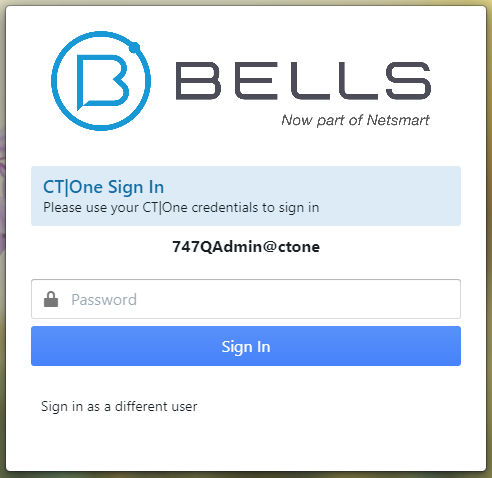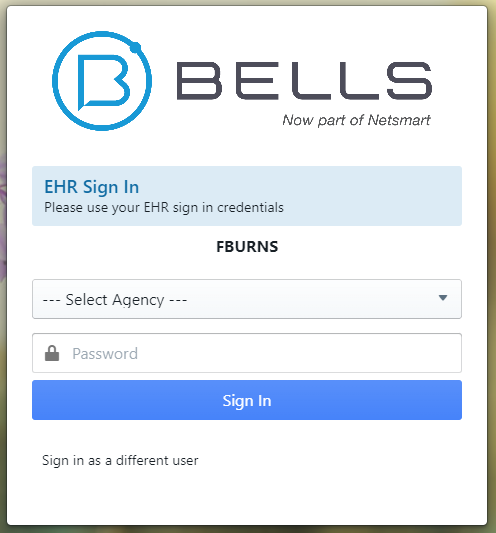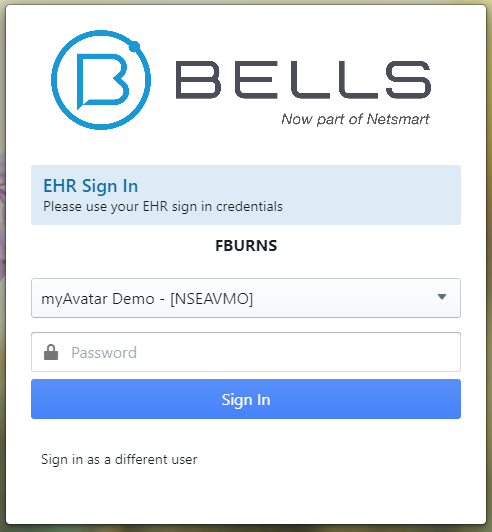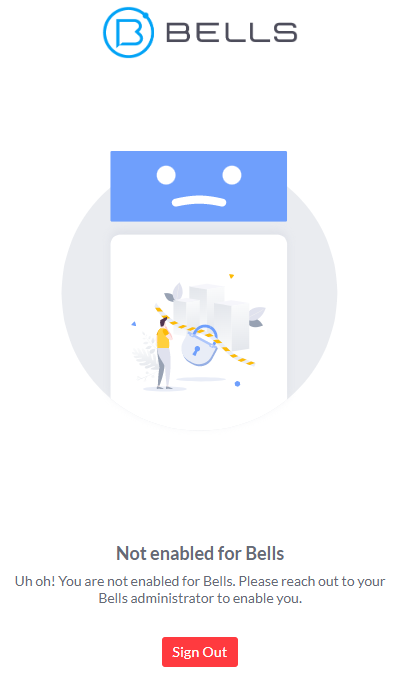Signing In
Once you're a registered Bells user, you can sign in.
To sign in, type your username and click Continue.
If you're eligible for NIAM, the "Sign in with Enterprise Credentials" button is a one-click solution. For more information on signing in with NIAM please refer to the NIAM Sign In article here.

Then you'll be presented with a separate display for the password. Type in your password and click Sign In.

CT|One:
Your username is your CT|One username, which is typically something like
Either option works the same.
myAvatar and myEvolv:
The myAvatar and myEvolv sign-in flow is slightly different than what is shown above.
When you sign-in, you'll select your myAvatar or myEvolv agency, and this will include the scope that your username is associated with. Then enter your password and click Sign In. In the dropdown, your agency name and scope will display. The scope is the Netsmart abbreviation for your organization.


Your username is your myAvatar username and is case sensitive, it is typically something like:
JC1111
 myAvatar and myEvolv users also need to select their agency and the scope for their organization. This is the organization abbreviation.
myAvatar and myEvolv users also need to select their agency and the scope for their organization. This is the organization abbreviation.
 myAvatar and myEvolv users that are configured for multiple subsystems in myAvatar and myEvolv will need to select the system they want to use after signing-in. Additionally, if your username matches the username of another user for Bells, you may see multiple organizations listed for you on the sign-in display. You must select your correct organization, Bells will remember your selection moving forward.
myAvatar and myEvolv users that are configured for multiple subsystems in myAvatar and myEvolv will need to select the system they want to use after signing-in. Additionally, if your username matches the username of another user for Bells, you may see multiple organizations listed for you on the sign-in display. You must select your correct organization, Bells will remember your selection moving forward.
 In addition, myEvolv requires you to fill in both a myEvolv login name as well as the NIAM username. You must supply both.
In addition, myEvolv requires you to fill in both a myEvolv login name as well as the NIAM username. You must supply both.
Not Enabled
If your profile is not yet enabled in Bells, you will see a prompt like below. Connect with your Bells Administrator to enable you on the User Management display so you can fully sign-in to Bells.

Application Lockout
The default lockout is 30 minutes. If you step away from the computer, when you return you will have to sign in again. Check with your Bells administrator to confirm what your organization's lockout threshold is.